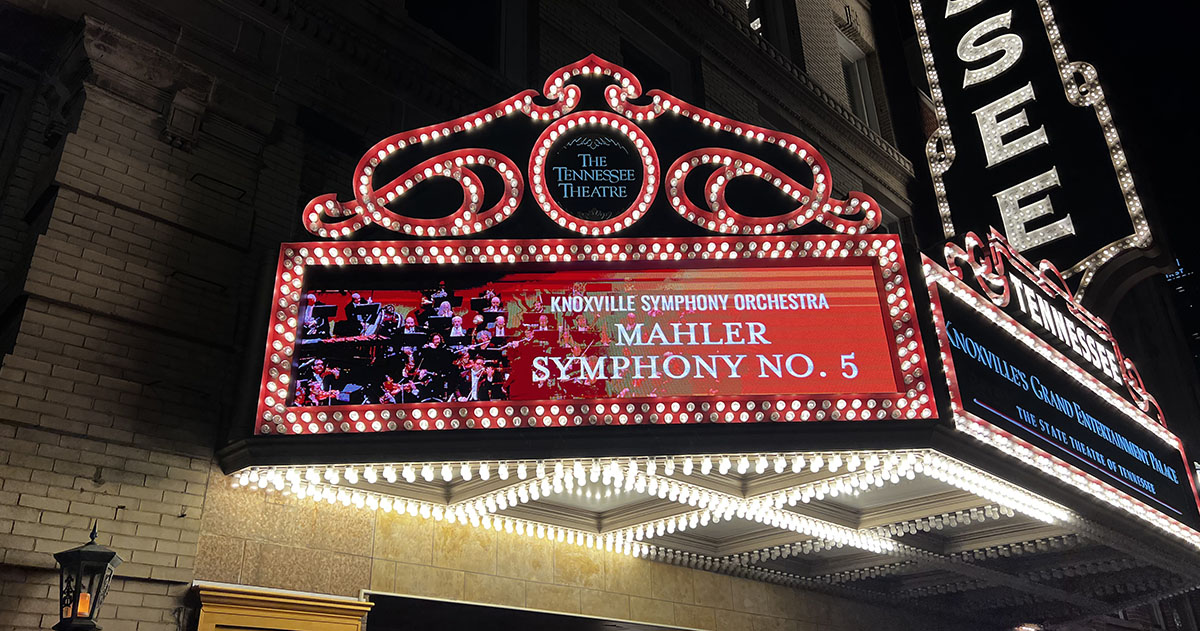And just like that, everyone was talking about Mahler’s Symphony No. 5.
Or at least, that’s the way it seemed two years ago. With the release of Tár, the 2022 film by Todd Field starring Cate Blanchett as the fictional maestro Lydia Tár, the Mahler work entered quasi-mythical territory and reclaimed some of its “trendy” status with listeners that it had previously enjoyed. After its release, streams of the symphony went through the roof, reminding some older listeners of their infatuation with the sublime Adagietto movement featured in Luchino Visconti’s 1971 film Death in Venice. And, of course, Leonard Bernstein’s championing of Mahler in the 1960s in performances and recordings with the New York Philharmonic brought the composer front and center and accelerated his inevitable return to the regular repertory of orchestras in the U.S. following the antisemitism of the Nazi era and before.
Although performances in the classical music world generally lag programming intentions by a year or more, the Knoxville Symphony Orchestra has at last given Knoxville audiences something Mahler to talk about—Gustav Mahler’s Symphony No. 5 was the sole work on the weekend’s Masterworks concerts. Judging by the impressive attendance, anticipatory buzz, and post-concert ebullience, the KSO audience was ready for an event—and they got one, thanks to an epic performance by Maestro Aram Demirjian and the orchestra that was sprawling and ultimately triumphant, yet carefully detailed in all the appropriate places.
Demirjian’s approach to Mahler seemed to be surprisingly episodic, but one that cheerfully embraced—more or less—the expansion and contraction of time, whether in the Funeral March and turbulent Storm of the opening movements, or later in the Scherzo. In the opening Funeral March, Demirjian set a tone of intent by threading his way through the storm without getting side-tracked by over-dramatization. Of course, a necessary feature of the opening was the standout performance of the notable trumpet solo by Kole Pantuso, KSO Principal Trumpet. Pantuso also played brilliantly throughout the evening, rendering the recurring trumpet passages with precise and descriptive playing.
The orchestra showed great stamina in the lengthy Scherzo with players having to move between different sweeping emotions of waltz-like rhythms, lyrical conversations, and percussion-flavored tonal painting. Beyond impressive here was the expanded horn section, led here by the eloquent and impassioned playing of KSO Principal Horn Jeffery Whaley who had quite an important evening throughout. Kudos here also go to the new KSO Principal Bassoon Duncan Henry for a beautiful rendering.
Interestingly, the famous Adagietto movement was deeply expressive without feeling particularly slow as Mahler notes in the score—yet it was decidedly so in the most appropriate way.
At last, the Finale was deliciously triumphant, energized but controlled, flavored by the chorale-like harmony in the brass. One fully expects a raucous close, but Mahler offers up one that doesn’t take itself too seriously, instead closing with what has been called “a shout of laughter” that ends it all.
After an hour and ten minutes, one might have thought that the audience would be ready to head for the sidewalk. Instead, Demirjian and the orchestra was forced to endure a lengthy ovation of bravos bordering on boisterousness, and an eager willingness to reward admirable music making. Perhaps, we shouldn’t be surprised if the KSO continues its journey through Mahler symphonies in the seasons to come.







Being a music history teacher, I often wonder at the forward march of time, and the constant march forward of what is considered “Old” and what isn’t. All of this is to ask, is it possible that Mahler is the new Beethoven? The NSO’s (N=Nashville!) Director is making a huge point of completing a cycle of Mahler before he moves on. Granted this spring he is also featuring B’s 9th, but it just doesn’t seem as epoch-making as his performance of M’s 10th last season. Thanks for what you all do! Arts Knoxville is the “Bee’s knees!”